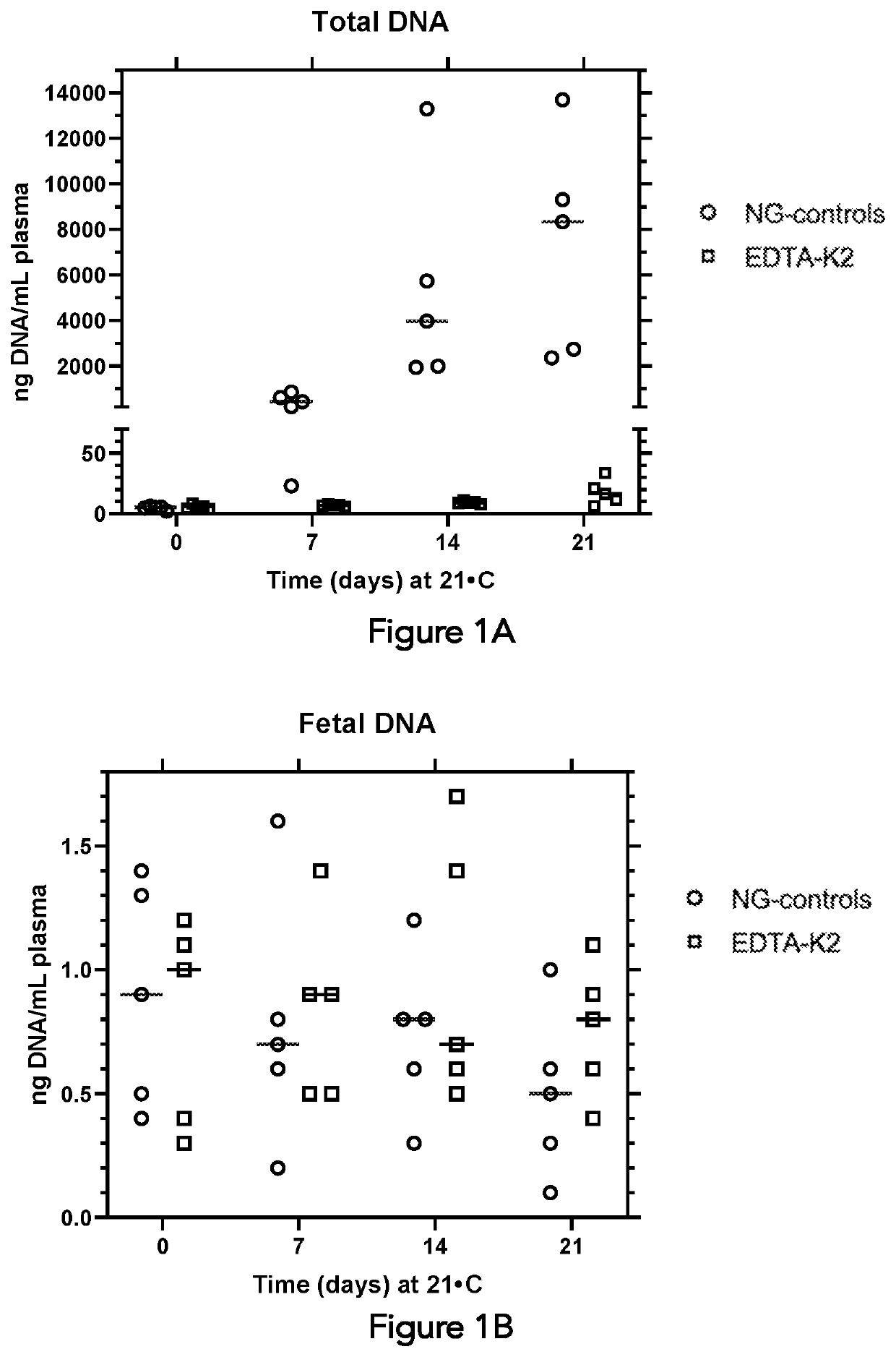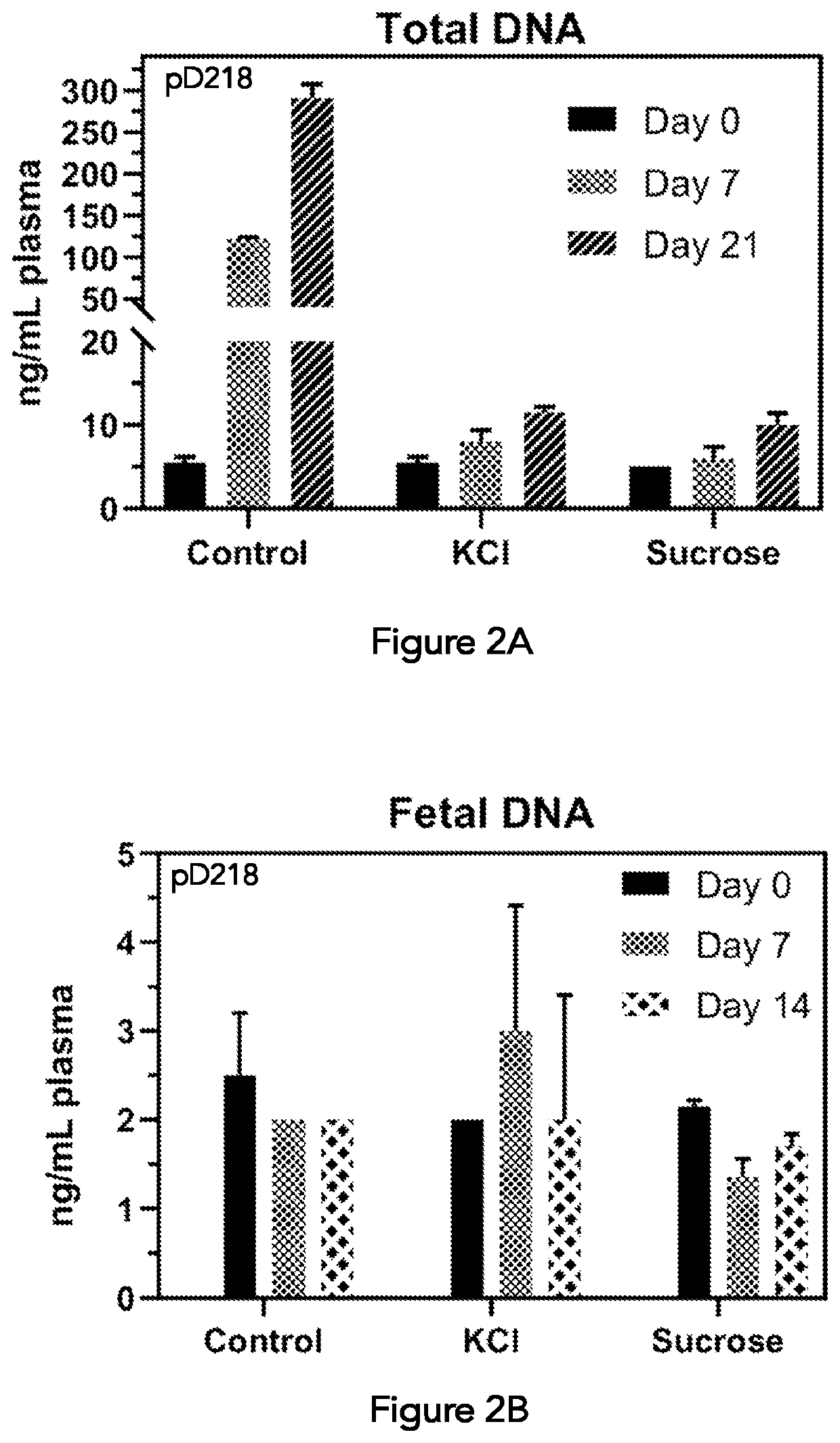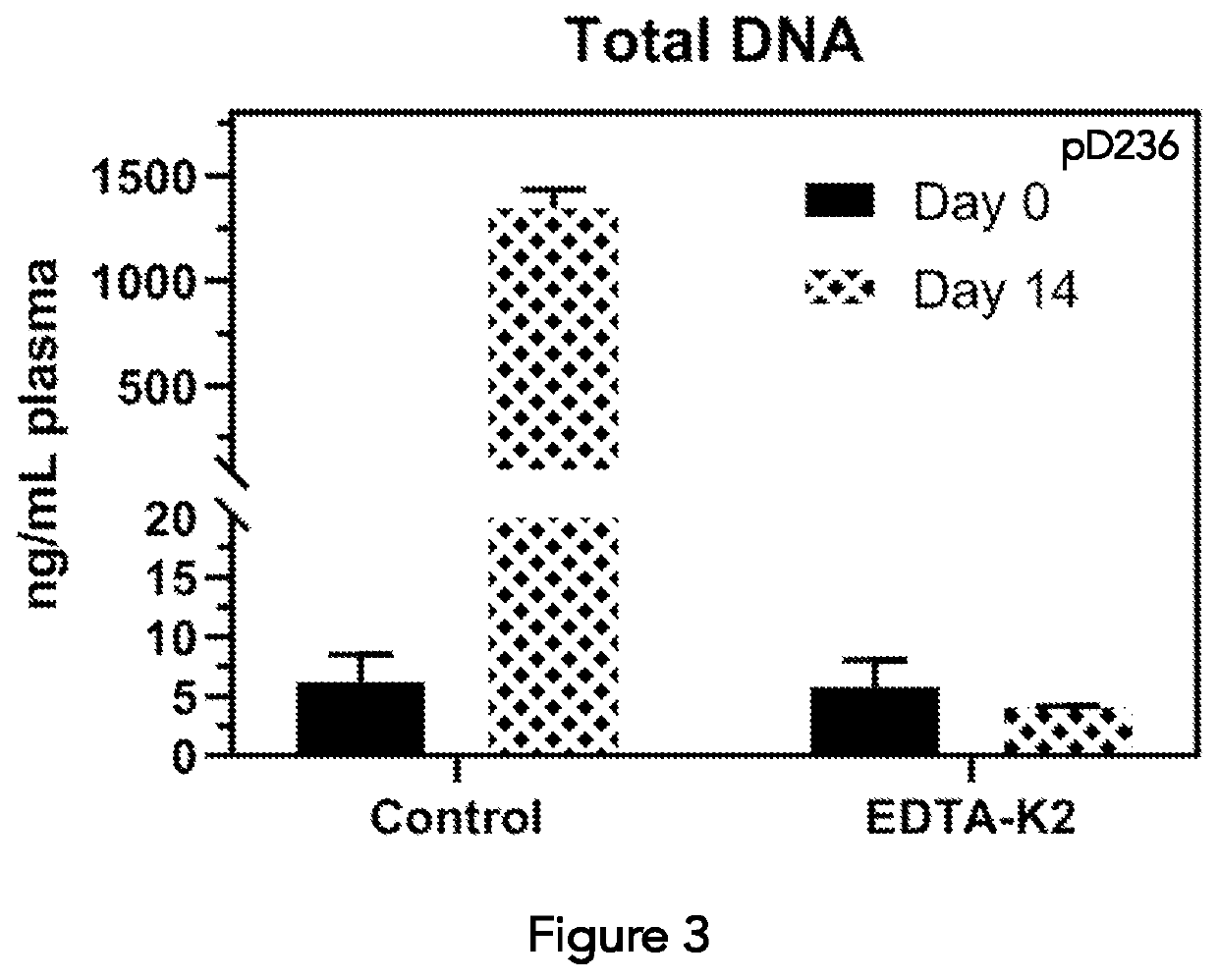Composition and method for segregating extracellular DNA in blood
a technology of extracellular dna and blood, applied in the field of composition and method for segregating extracellular dna in blood, can solve the problems of increasing the difficulty of analysis of extracellular dna, increasing the diluteness of fetal dna, and increasing the difficulty of genetic analysis, and achieve the effect of stabilizing extracellular dna
- Summary
- Abstract
- Description
- Claims
- Application Information
AI Technical Summary
Benefits of technology
Problems solved by technology
Method used
Image
Examples
Embodiment Construction
[0050]Unless defined otherwise, all technical and scientific terms used herein have the same meaning as commonly understood by one of ordinary skill in the art to which this invention belongs.
[0051]As used in the specification and claims, the singular forms “a”, “an” and “the” include plural references unless the context clearly dictates otherwise.
[0052]The term “comprising” as used herein will be understood to mean that the list following is non-exhaustive and may or may not include any other additional suitable items, for example one or more further feature(s), component(s), ingredient(s) and / or element(s) as appropriate.
[0053]As used herein, the term “thixotropic gel” refers to a gel-like substance that is thick or viscous under static conditions but will flow and become less viscous when shaken, agitated, sheared or otherwise stressed. The function of the barrier gel is to keep the dense solution separate from the anticoagulant solution and the blood until the tube is centrifuge...
PUM
| Property | Measurement | Unit |
|---|---|---|
| time | aaaaa | aaaaa |
| temperature | aaaaa | aaaaa |
| temperature | aaaaa | aaaaa |
Abstract
Description
Claims
Application Information
 Login to View More
Login to View More - R&D
- Intellectual Property
- Life Sciences
- Materials
- Tech Scout
- Unparalleled Data Quality
- Higher Quality Content
- 60% Fewer Hallucinations
Browse by: Latest US Patents, China's latest patents, Technical Efficacy Thesaurus, Application Domain, Technology Topic, Popular Technical Reports.
© 2025 PatSnap. All rights reserved.Legal|Privacy policy|Modern Slavery Act Transparency Statement|Sitemap|About US| Contact US: help@patsnap.com



